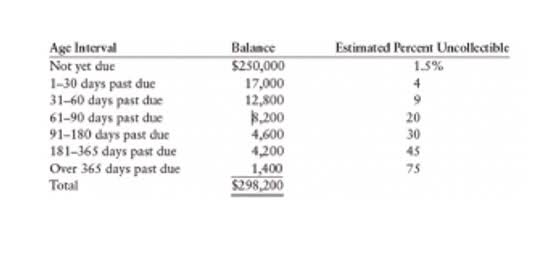This purchase would also reduce operating cash flow, which also reduces the working capital as the cash in current assets decreases. The direct method, as discussed earlier, is a much more straightforward method of conducting your operating cash flow statement, as it only reports in cash or cash equivalencies. Investors need to take into account all angles of an organization’s finances when evaluating a new partnership.
OCF, short for “Operating Cash Flow,” refers to the net amount of cash brought in by a company’s day-to-day operations. Investments in securities markets are subject to market risks, read all the related documents carefully before investing. Find out its importance, components, calculation, types, and strategies to optimize cash flow efficiently. Analyzing different investment opportunities helps you better understand the potential outcomes of various scenarios.
Offers insights into different results
A higher ratio means faster collections, improving cash flow and financial health. Locate depreciation, a non-cash expense, from the cash flow or income statement. Add it to NOPAT since it reduces taxable income but not actual cash. When strategizing potential options to expand your business, calculating DCF can help you make smarter financial decisions. If the DCF calculation shows a higher value today over what the investment initially cost, the opportunity may be worth pursuing. Automated comparison adds unprecedented efficiency and accuracy to the evaluation process.
- Compared to the indirect method, the direct method is simpler, as the formula comprises subtracting cash operating expenses from cash revenue.
- The direct method can give you a handle on how your business operates.
- Operating cash flow is an important and fundamental financial metric that shows how much cash flow a business is able to generate from the core operations.
- Reducing unnecessary expenses can free up more cash from operations.
Non-cash expenses would be both accrued expenses and deferred revenue. FCF is often spotlighted when evaluating a company’s ability to expand or provide shareholder value. A robust OCF can indicate operational efficiency and self-sustainability. Learn how payroll templates for Excel can simplify payroll management. Discover the key features, benefits, and top examples to boost efficiency faster. Bank reconciliation is a crucial financial process for businesses to ensure that records match…
For instance, overestimating your cash flow could lead to bad financial decisions, while underestimating it might cause you to overlook the growth potential a new investment or opportunity could bring to your business. Planned vs. actual analysis helps you systematically evaluate your business’s performance against predetermined financial goals.The goal of this analysis is to get precise numbers that tell you if your project is on track. Stick with this short 2025 guide to learn how to understand these performance metrics, implement analysis techniques and keep project management on track.
Key Differences Between Operating Cash Flow and Net Income
Suppose if you have adequate sales numbers but don’t generate sustainable revenue to run the business, then something is wrong with the cash flow. Such issues with the cash flow can be picked by operating cash flow (OCF). A favorable operating cash flow means the company earns enough to cover costs, while a negative signals trouble.
SECURITIES
Using the net income, non-cash expenses, and changes in working capital, you can calculate operating cash flow with the indirect method. A key benefit of the indirect method is that it’s consistent with financial statements and more closely aligned with the accrual accounting used. The positive operating cash flow indicates that the company is generating enough revenue to maintain and grow its operations without seeking external financing.
Instead, businesses should focus on improving their operational efficiency to generate cash internally. OCF accounts for changes in accounts receivable, accounts payable, and inventory, which can significantly impact cash availability. A business may report strong profits but struggle with cash flow due to slow customer payments or excessive inventory.
Using DCF to Evaluate Future Valuations
This separation allows for a more accurate assessment of a company’s operational efficiency and financial health. Also called leveraged free cash flow, FCFE calculates the cash remaining for equity shareholders after all financial obligations, including debt repayments and interest expenses, have been settled. This metric is particularly useful for investors who want to evaluate dividend-paying potential, stock valuation, and overall financial health. A positive FCFE indicates that a company has enough cash to distribute profits to shareholders or reinvest in business growth. This metric is crucial for investors and analysts because it indicates a company’s financial health and its ability to generate surplus cash. Unlike net income, which includes non-cash items like depreciation, FCF focuses purely on cash, offering a clearer picture of liquidity and operational efficiency.
OCF measures the amount of cash generated by a company’s core business operations over a specific period. It’s the cash inflows and outflows directly related to producing and selling the company’s products or services. OCF what is operating cash flow formula ocf formula specifically excludes cash flows from investing activities (like purchasing equipment) and financing activities (such as issuing stock or paying dividends).
How to Make Better Decisions With Financial Statements?
- OCF accounts for changes in accounts receivable, accounts payable, and inventory, which can significantly impact cash availability.
- Therefore, a decrease in inventory must be added back to net income.
- The direct method records all transactions on a cash basis, displaying actual cash inflows and outflows during the accounting period.
- Capital One is ready to be your partner and help support your business’s growth.
To conduct an accurate plan vs. actual analysis, you should start creating a thorough plan that outlines your expected financial metrics and goals in detail. You’ll then keep track of your real results as they happen.On this step don’t forget to ensure accuracy in data collection from your accounting systems and financial reports. Planned vs. Actual Analysis (also known as variance analysis) is a measurement technique that compares forecasted targets with real-world results. Whether you’re using spreadsheets or specialized software, this comparison is your compass for making informed strategic adjustments and improving future projections. The cash flow coverage ratio determines the credit risk of a company or business by comparing its OCF (Operating Cash Flow) and total outstanding debt.
It’s widely used to assess a company’s valuation, sustainability, and ability to reward shareholders over time. These integrations transform your financial management by creating a unified ecosystem where data flows automatically between systems, improving accuracy and efficiency while reducing operational costs. Even a strong cash coverage ratio means nothing if margins are evaporating.
And that’s why tracking OCF is important to learn how soon you will achieve the target or what necessary changes are required in the business operations. Imagine if you are an investor, then you would only consider those companies that have stable growth and a better OCF. Similarly, any investors will assess whether your company is good enough to make ROI before putting their money. Send paperless invoices and receipts within a few minutes and get paid on time to avoid cash flow problems. Despite being a more complex OCF calculation method, the indirect method is a top pick for modern businesses.
When net income is higher than OCF, it may be possible that they have a difficult time collecting receivables from the customer. As depreciation is added to the annual operating cash flow formula depreciation does not affect OCF. Thus, all the above requirements of the formula can be found in the financial statements of the business and the dat is taken to make the calculation. This is an important metric for analysts, investors and also the management who can make financial plans and take important financial decisions based of the results obtained.
Because DCF relies on future performance estimates, it’s highly sensitive to even small assumption changes—making precise discount rate estimation critical. Bajaj Financial Securities Limited is not a registered adviser or dealer under applicable Canadian securities laws nor has it obtained an exemption from the adviser and/or dealer registration requirements under such law. Accordingly, any brokerage and investment services provided by Bajaj Financial Securities Limited, including the products and services described herein are not available to or intended for Canadian persons. Just write the bank account number and sign in the application form to authorise your bank to make payment in case of allotment. Ability to Handle Economic DownturnsCompanies with strong FCFs can withstand economic downturns better by having sufficient liquidity to cover expenses, manage debts, and seize opportunities when competitors may struggle. Whether you’re investing in new equipment or launching a new product, DCF can help you determine if that investment is worth the expense.
Shaun Conrad is a Certified Public Accountant and CPA exam expert with a passion for teaching. After almost a decade of experience in public accounting, he created MyAccountingCourse.com to help people learn accounting & finance, pass the CPA exam, and start their career. The below template is the data for the calculation of the Operating Cash Flow Equation. In the template below is the data for the calculation of Operating Cash Flow.



